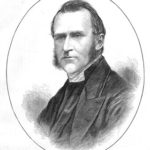Jacob Arminius may well be one of the most misunderstood figures in Protestant theology. Despite the widespread influence of Arminius’ theology in many churches and denominations, many of both his supporters and his opponents grossly misunderstand Arminius and his thought. This is where Keith Stanglin, Mark Bilby, and Mark Mann’s edited volume, Reconsidering Arminius: Beyond the Reformed and Wesleyan Divide, comes in. The book seeks to look at Arminius’ own theological ideas as he formulated them, both as a means of reconstructing the “historical Arminius” and as a way of finding common ground between the Reformed and Wesleyan-Arminian traditions, in order to better do theology and evangelism together. The book’s seven chapters are roughly divided in half, with chapters 1-4 covering the history of Arminius’ thought and chapters 5-7 covering the theological convergences of Arminus’ thought with other, more contemporary models of theological thinking.
After a brief introduction by Mann and Bilby, the “historical section” of the book begins with the first chapter by Reformed scholar, Richard A. Muller. Muller examines Arminius’ views on the three-fold office of Christ; that is, Christ as Prophet, Priest, and King. Muller comes to the conclusion that Arminius falls well within the broad parameters of the Reformed orthodoxy of his day on the issue. Muller, a Calvinist himself, thus refutes the erroneous charge that Arminius fell outside orthodox bounds regarding his understanding of Christ. In the second chapter, Wesleyan systematic theologian, Thomas H. McCall, examines recent claims that Arminius’ modal logic on issues of foreknowledge and predestination inevitably lead to a form of theological determinism (the idea that God is the sole cause of all that happens, including human sinful actions). McCall rightly assesses such claims to demonstrate Arminius’ capability as a modal logician, and that Arminius did, in fact, avoid theological determinism in his mature work. In the third chapter, historian Jeremy Dupertuis Bangs seeks to show that even ardent anti-Arminians in the 17th century Netherlands nevertheless agreed with Arminius on the provisional nature of all human confessional statements, such as the Heidelberg Catechism and the Belgic Confession, and that it is Scripture that should be our “norming norm” for theology.
The “historical section” of the book concludes with the fourth chapter, by W. Stephen Gunter. This is perhaps the most important chapter for those readers in the evangelical Wesleyan tradition. Among the issues discussed by Gunter, of chief importance is his analysis of the extremely close Augustinian views of original sin and prevenient grace in Arminius and Wesley, as well as the subsequent loss of such emphases in some of Wesley’s successors, particularly within American Methodism. In short, both Arminius and Wesley affirmed that any and all good comes from God and that humans are bound by sin until freed to respond to God’s initiating offer of salvation by His prevenient grace. Neither Arminius nor Wesley held an optimistic view of an unhindered human free will. Rather they affirmed that human wills are bound in sin and are freed by the prevenient enabling grace of God. Arminius and Wesley believed in freed will, only possible and enabled by God’s grace. This strong emphasis on God’s prevenient, enabling grace as preeminent in regards to human salvation, is one that should be reclaimed by Arminians of all stripes, Wesleyan or otherwise.
The “theological section” of the book begins with chapter five, wherein Reformed systematic theologian Oliver D. Crisp takes a critical look at the respective doctrines of creation in Arminius’ and Jonathan Edwards’ work. Crisp ably shows that while Arminius’ formulation of the doctrine fully conforms to a robust, classical orthodoxy, Edwards’ views end up leading logically to panentheism (the idea that God relies on the world for some or all of his existence) at best and pantheism (the idea that the world is an emanation of God) at worst, and thus falls outside of classical, orthodox bounds. E. Jerome Van Kuiken—with what may be the most theologically substantive essay in the book—follows in the sixth chapter with an examination of the convergences between the theologies of Scottish Reformed theologian Thomas F. Torrance and Arminius. The multiple convergences Van Kuiken finds between the two theologians—particularly their mutual rejection of any sort of limited atonement and mutual affirmation of a Christ-centered understanding of divine election—should be, in this reviewer’s opinion, one of the key foundations from which Wesleyan-Reformed dialogue should proceed.
John Mark Hicks concludes with the seventh chapter by addressing Arminius’ view of divine providence in relation to open theism. Hicks clearly and ably demonstrates that Arminius was nowhere near adhering to open theism and that he, in fact, affirmed God’s meticulous providence (though not divine determinism, á la Calvinism). Keith Stanglin then concludes the book by arguing for a continued reclamation of Arminius’ theology, not only for the sake of recovering the “historical Arminius,” but also to serve as a key bridge-point between Reformed and Wesleyan theological dialogue. Just as evangelical Wesleyans are right to reclaim John Wesley’s own theology in the face of many later “pseudo-Wesleyanisms,” so too should they seek to reclaim the theology of Jacob Arminius and the title of “Wesleyan-Arminian.”
Reconsidering Arminius is an excellent collection of essays. Not only does it serve as a concise entry point into the growing field of Arminius studies, it also provides key, workable theological bridge-points between Wesleyan-Arminian and Reformed theology for future dialogue and united gospel cause. Whether one is seeking to learn more about classical Arminian theology, or seeking to foster evangelical dialogue between traditions, this volume is an excellent starting point.
[This post was taken from the Seedbed Blog where commetns can be made.]





